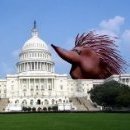High Tariff Barriers can Lead to Support of Lame Industry
-
Recently Browsing 0 members
- No registered users viewing this page.
-
Topics
-
-
Popular Contributors
-
-
Latest posts...
-
0
Report Paetongtarn Shinawatra Vows to Restore Faith in Thai Buddhism
Photo courtesy of KhaoSod English Facebook Thailand is grappling with a series of monk scandals that have shaken the nation's trust in Buddhism. In response, Culture Minister Paetongtarn Shinawatra has announced a major initiative to restore the religion’s tarnished image. Speaking through social media, Paetongtarn, also the leader of the ruling Pheu Thai Party, emphasised the urgency of rebuilding public confidence. "The recent misconduct by monks has caused deep confusion and weakened people’s faith," she stated. "This is more than an isolated issue; it’s a critical turning point." The government has directed the Ministry of Culture, alongside the National Office of Buddhism and the Ministry of Education, to launch a comprehensive awareness campaign. The aim is to mend the relationship between laypeople and the clergy while reinvigorating traditional Thai values centred around morality and peaceful coexistence. Paetongtarn has convened high-level meetings within her ministry to develop long-term strategies. She is clear that the approach will not resist societal change but will adapt to it thoughtfully. "Our approach will not reject societal change but embrace and adapt to it consciously," she remarked. A key focus of the campaign is to modernise how Buddhism is presented, particularly to younger audiences. This involves updating the communication of Buddhist teachings to resonate with the digital age. Instead of outdated methods, the campaign seeks to provide real opportunities for Thai youth to connect with Buddhism in ways that are relevant to their daily lives. Additionally, Paetongtarn called on civil servants and government workers to set an example. She stressed that restoring faith in Buddhism requires more than just policy changes; it necessitates a collective and sincere effort throughout society. "True restoration must come from mutual understanding and collective action," she noted. This initiative comes in the wake of recent scandals involving monks and temple mismanagement, which have attracted significant public and media scrutiny. These events have challenged the credibility of the country's religious institutions. Paetongtarn's campaign is set to unfold in phases over the coming months, with the potential to significantly impact the perception and practice of Buddhism in Thailand. As reforms take shape, the nation watches closely to see if these efforts will restore trust and reinforce the enduring values of Buddhism in modern Thai society. Adapted by ASEAN Now from The Thaiger 2025-07-18 -
12
Another brilliant idea from the Trump administration
Are you claiming that HFCS, beet sugar and cane sugar have no other components than C₆H₁₂O₆? That they are chemically indistinguishable? -
51
USA CBS Drops Bombshell: Stephen Colbert's 'Late Show' to End in 2026
He hates Trump, he satirizes him constantly, he is quite funny, and Trump has no sense of humor. He has never has had one. He despises anyone who makes fun of him and unfortunately a lot of his followers don't have much humor either when it comes to criticism of their master, so that's all kind of a perfect storm. My guess is that this is politically motivated. He's been making $15 million a year and it's worth nearly $100 million, so maybe it's time for him to take it easy. It's all good, the universe is in a constant state of flux, so why shouldn't that change too? -
130
Leaving an inheritance to my Thai GIRLFRIEND.
You're right about the prior comment being wrong... AFAIK, under Thai inheritance law, the spouse is automatically entitled to HALF of all the communal marital property.... In the absence of a will directing otherwise, there are various other levels of familial statutory inheritance under Thai law -- parents, siblings, children, etc. Assuming the children were the only ones living with such entitlements, they (in whatever number of them existed) would divide the other half. -
126
The face of Dem lunatics …
Better than all your lame hate based simpleton gaslighting comments. -
126
The face of Dem lunatics …
Yes, he definitely got in trouble every time he went off script. Thank God he’s gone.
-
-
Popular in The Pub


.thumb.jpeg.d2d19a66404642fd9ff62d6262fd153e.jpeg)







Recommended Posts
Create an account or sign in to comment
You need to be a member in order to leave a comment
Create an account
Sign up for a new account in our community. It's easy!
Register a new accountSign in
Already have an account? Sign in here.
Sign In Now